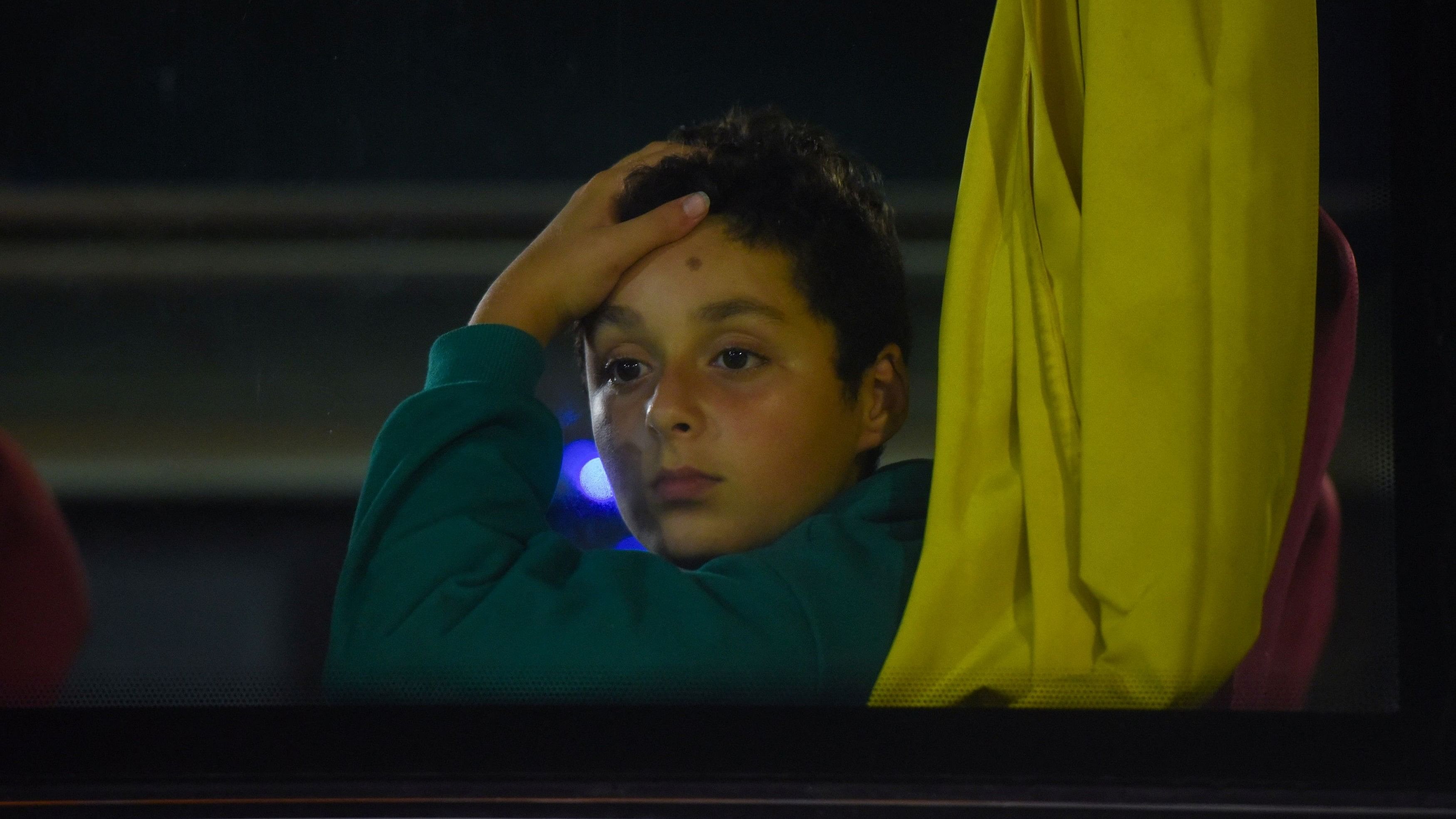
A boy looks out of a bus window as Palestinians are evacuated amid the ongoing conflict between Israel and the Palestinian Islamist group Hamas.
Credit: Reuters Photo
Amid a barrage of airstrikes, Israel sharply expanded its evacuation orders in the Gaza Strip on Sunday in preparation for an expected ground invasion in the southern part of the territory.
The new orders, coming three days after the collapse of a weeklong truce, sowed confusion and fear among residents of Gaza, some of whom have already been displaced at least once before.
Images from Gaza on Sunday showed plumes of dark smoke rising above a rubble-covered landscape and bloodied children wailing in dust-covered hospital wards. Mourners stood beside rows of bodies wrapped in white sheets.
Late Sunday, a military spokesperson, Rear Adm. Daniel Hagari, said Israel “continues and expands its ground operations against Hamas strongholds all across the Gaza Strip,” but did not elaborate.
Military officials declined to comment on whether Hagari’s comments meant an Israeli ground invasion of the south had begun.
Ashraf al-Qudra, a spokesperson for the Health Ministry in Gaza, said Israeli airstrikes had killed more than 15,500 people since Oct. 7, when Israel began its assault after Hamas militants crossed the border into Israel and killed 1,200 people.
The Israeli military said over the weekend that it had approved plans for a larger ground invasion. Israeli forces have already taken control of large parts in and around Gaza City following a ground invasion from the north.
The Israeli military said it had carried out airstrikes Friday and Saturday against more than 400 targets across the Gaza Strip.
The list of areas ordered evacuated in southern Gaza swelled to 34 on Sunday, all clustered southeast of Khan Younis, from 19 the previous morning. The Israeli military marked each on a map of Gaza that divided the territory into nearly 2,400 blocks, advising residents to pay attention to Israeli announcements about whether their block was being evacuated.
The Israeli military’s evacuation map showed big orange arrows directing people toward already-overflowing shelters or what it called the “humanitarian zone” in Al-Mawasi, an agricultural area near the Mediterranean Sea.
But it was far from clear that the zone provided sufficient supplies or shelter, with some who fled there describing little awaiting them and no visible presence of humanitarian aid. Last month, UN agencies and other groups said that they would not participate in setting up any so-called safe zones in Gaza because those zones could not really protect civilians.